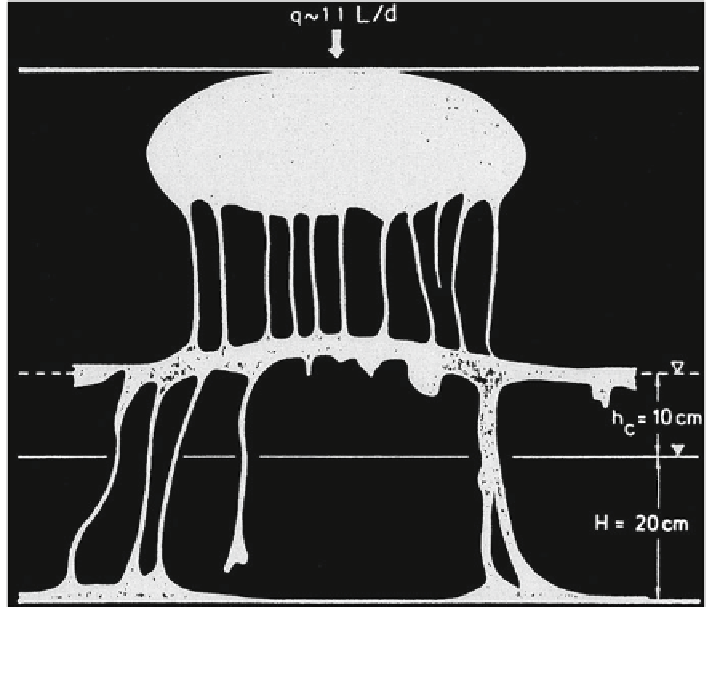Geoscience Reference
In-Depth Information
Fig. 11.3 Infiltration pattern of a DNAPL in an homogeneous domain, through the partially
saturated, capillary fringe, and saturated zones; h
c
and H represent the heights of the capillary
fringe and the saturated zone, respectively (Schwille
1988
)
combined
with
mass
conservation
equations
to
derive
governing
transport
equations.
The relative permeability is difficult to quantify. It usually is estimated on the
basis of laboratory experiments, as a function of relative saturation. In three-phase
NAPL-water-air systems, each relative permeability is dependent on the relative
saturation of each of the phases. Modeling based on empirical considerations can
be employed. For example, Blunt (
2000
) discusses a model to estimate three-phase
relative permeability, based on saturation-weighted interpolation of two-phase
relative permeabilities. The model accounts for the trapping of the NAPL and air
(gas) phases and predicts three-phase relative permeabilities for different porous
medium and NAPL properties. However, experimental determination of two- and
three-phase relative permeabilities is a particularly complex issue that remains a
subject of basic research.
Another aspect of NAPL migration in the subsurface environment, different
from movement of dissolved contaminants, is that, as it advances downward
through the partially saturated zone, a fraction of the NAPL phase remains trapped

